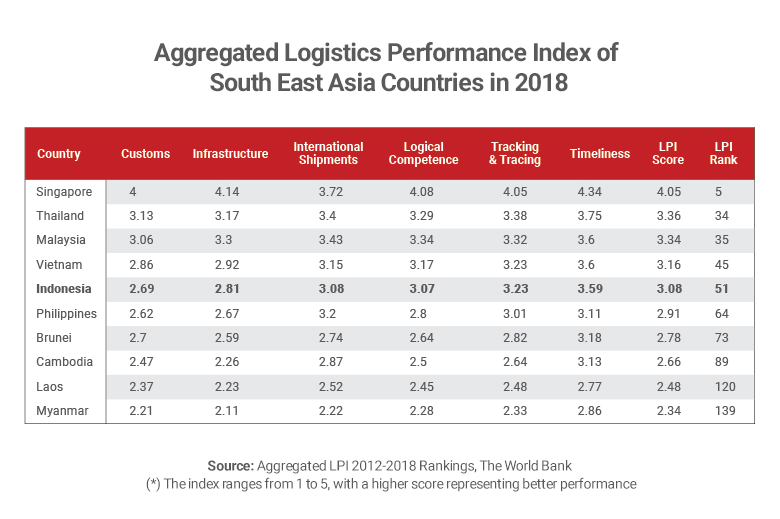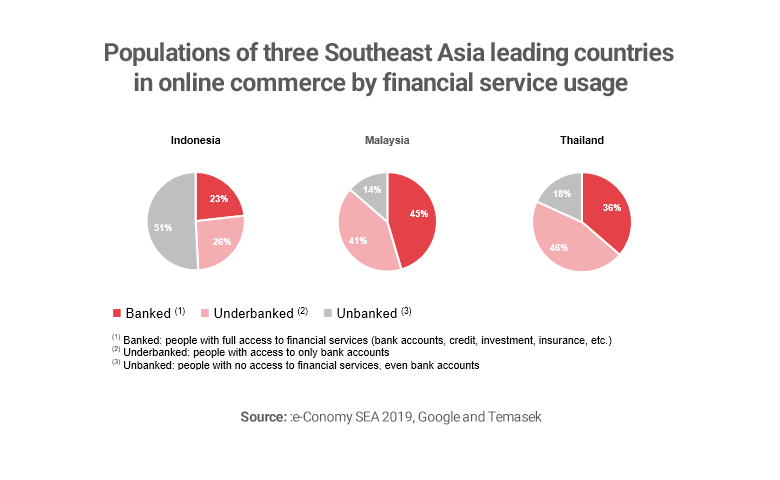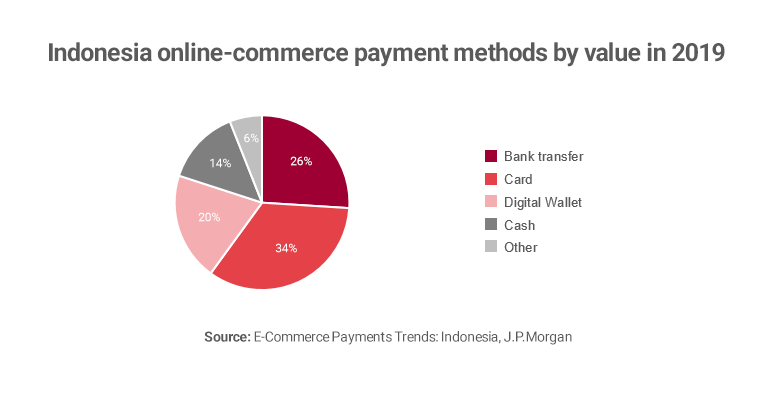
Indonesia is undergoing a rapid digitalization, with over 107 million internet users as of June 2019. The number is expected to exceed 150 million by 2023, making Indonesia the biggest online market in Southeast Asia. However, there are some challenges related to the logistic infrastructure and online payment methods that Indonesia needs to overcome in order to reach its full potential.
The Indonesian digital economic landscape has seen a rapid growth during recent years, reaching a total value of 40 billion USD in 2019, an increase of 400% since 2015. The internet economy value is based on the five key sectors: online travel, online media, ride hailing, e-commerce and digital financial services, and is presented annually in Google’s report SEA e-Conomy.
The massive growth of the online market in Indonesia has been due to a wide range of favorable factors. The biggest contributing factor for the growth has been the increasing Indonesian middle class, a highly tech-savvy population. In addition to the large number of internet users, Indonesia also has a great number of smartphone users, and a recent study from GlobalWebIndex showed that 79% of the population between the ages of 16 and 64 has made at least an online purchase via a mobile device.
However, there have been some challenges in the logistics and infrastructure of the country to keep up with the growing demand of online purchases. The Indonesian government has made continuous efforts in improving the country’s logistics and infrastructure. Two of the most prominent projects that have been launched associated with these developments are the “Trans-Java Toll Road” and the “Palapa Ring” projects. The first aiming to cut logistics cost and encouraging economic activities on the island of Java, by facilitating transportation between key areas. The later project’s purpose is to deliver high-speed internet services to under-developed regions of Indonesia, and thereby help to accelerate the country’s internet penetration rate.

Even though Indonesia increased its rank in logistical performance from 63rd to 51st between 2016 and 2018, according to the World Bank’s ranking, it is still lagging behind its middle-income neighbors Thailand, Vietnam and Malaysia. This is due to certain obstacles, such as the disordered address system, unstandardized shipment processes, and the country’s vast geography of more than 17,000 islands.
The growing e-commerce also means that the number of orders will subsequently increase, both domestically and internationally. Therefore, there is intense pressure to improve the country’s logistics infrastructure in order to meet the market demands.
Another big challenge that the online commerce of Indonesia has to face is the low level of cashless payments. Payment adoption and security are prerequisites for a growing online commerce market. However, only 49% of the Indonesia population have a bank account and access to financial services. The proportion of fully “banked” citizens with full access to financial services is even lower (only 23% of the population). These numbers are well below those of other SEA mid-income countries such as Malaysia and Thailand. The majority of transactions in Indonesia are still cash-based, which subsequently results in greater complexity and high costs for processing them.

To secure and encourage the adoption of cashless payments, the Indonesian government launched the national payment gateway (Gerbang Pembayaran Nasional) in 2017, that enables an interconnected payment ecosystem. The initiative results in shorter transaction times, lower fees and safer transaction, and hence, is expected to increase the adoption of cashless instruments in Indonesia. Besides, the growth of online commerce in recent years has offered an opportunity for widespread adoption of cashless payments since people perceive it as more convenient when making purchases online. The convenience of online shopping will then attract more new shoppers and ultimately increase the value of the internet commerce market.

In 2019, DataReportal reported that the value of digital payment in Indonesia was 32.44 billion USD, and the annual growth rate was forecasted to be 21% in 2020. To handle the fast-growing demand of online payment and enhance the customer experience, more partnerships between fintech payment systems and banks needs to be established. This is an opportunity for enterprises and investors, but it also requires the government to come up with suitable policies to regulate and foster cybersecurity.
In conclusion, the Indonesia’s internet economy is growing quickly with the outlook of becoming the largest online market in Southeast Asia. On the way to reach its full potential, there are two challenges that needs to be solved, improving the country’s logistics infrastructure and encouraging the use of online payment methods. The upgrade of logistics infrastructure will enable faster and more efficient shipments, which contributes to a better customer experience. Likewise, the adoption of cashless payment methods will also increase convenience and efficiency of transactions. The fulfilment of these two challenges will bring benefits to all parties involved in the online commerce market, and thus, make way for further growth. In order to achieve that vision, there is a rising need for close collaboration between the government and private sector in upcoming years.
Read more about our other consulting services.
The insights provided in this article are for general informational purposes only and do not constitute financial advice. We do not warrant the reliability, suitability, or correctness of the content. Readers are advised to conduct independent research and consult with a qualified financial advisor before making any investment decisions. Investing in financial markets carries risks, including the risk of loss of principal. Past performance does not guarantee future results.
The views expressed herein are those of the author(s) and do not necessarily reflect the company's official policy. We disclaim any liability for any loss or damage arising from the use of or reliance on this article or its content. ARC Group relies on reliable sources, data, and individuals for its analysis, but accuracy cannot be guaranteed. Forward-looking information is based on subjective judgments about the future and should be used cautiously. We cannot guarantee the fulfillment of forecasts and forward-looking estimates. Any investment decisions based on our information should be independently made by the investor.
Readers are encouraged to assess their financial situation, risk tolerance, and investment objectives before making any financial decisions, seeking professional advice as needed.



